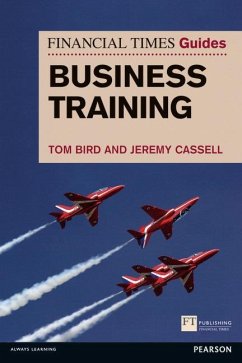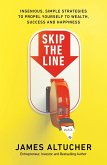‘This book is excellent. It stands head and shoulders above anything else I have read. If you want to be a better trainer and improve the impact you make, then I urge you to read this book today.’
Neil Mullarkey, writer, actor, comedian and business trainer
“I urge you to buy the book if you are in the business of learning and development as you will learn the core fundamentals of what it takes to be a great business trainer”
Gillian Secrett, CEO of The Møller Centre, Churchill College, University of Cambridge
‘It’s all here and it makes complete sense. Look no further if you want to improve the impact of your business training. Packed with punchy, practical how to’s. Even if you implement only a fraction of the book you’ll significantly improve the effectiveness of your training.’
Peter Honey, Occupational psychologist, management trainer, conference speaker and co-creator of Learning Styles
The Financial Times Guide to Business Training shows you how to develop, design and deliver outstanding business training. Written by two of the UK’s leading business trainers and based on extensive research into what the best trainers say and do, this book:
· Is a single reference for anyone involved in business training whether you are newly qualified or experienced, a freelance trainer or are already embedded in learning and development departments
· Provides a comprehensive resource of ideas, tools and approaches
· Will help you improve the quality of all aspects of your training needs, including analysis, planning and delivery
· Reveals the secrets of outstanding business training so that you can improve your reputation and results
· Answers commonly asked questions.
· Offers support on your training journey via www.theftguidetobusinesstraining.com
Product Description
Everything you need to know to become a first class business trainer, from working out how people learn, to finding out if you can be a trainer, through to showing you the tools and models that will allow you to be a successful educator and teacher.
The Financial Times Guide to Business Training shows you how to develop, design and deliver outstanding business training. Written by two of the UK’s leading business trainers and based on extensive research into what the best trainers say and do, this book:
· Is a single reference for anyone involved in business training whether you are newly qualified or experienced, a freelance trainer or already embedded in learning and development departments
· Provides a comprehensive resource of ideas, tools and approaches
· Will help you improve the quality of all aspects of your training needs, including analysis, planning and delivery
· Reveals the secrets of outstanding business training so that you can improve your reputation and results
· Answers commonly asked questions
· Offers support on your training journey via www.ftguidetobusinesstraining.com
Backcover
‘This book is excellent. It stands head and shoulders above anything else I have read. If you want to be a better trainer and improve the impact you make, then I urge you to read this book today.’
Neil Mullarkey, writer, actor, comedian and business trainer
‘I recommend that you buy this book if you are in the business of learning and development as you will learn the core fundamentals of what it takes to be a great business trainer.’
Gillian Secrett, CEO of The Møller Centre, Churchill College, University of Cambridge
‘It’s all here and it makes complete sense. Look no further if you want to improve the impact of your business training. Packed with punchy, practical how tos. Even if you implement only a fraction of the book you’ll significantly improve the effectiveness of your training.’
Peter Honey, occupational psychologist, management trainer, conference speaker and co-creator of Learning Styles
The Financial Times Guide to Business Training shows you how to develop, design and deliver outstanding business training. Written by two of the UK’s leading business trainers and based on extensive research into what the best trainers say and do, this book:
· Is a single reference for anyone involved in business training whether you are newly qualified or experienced, a freelance trainer or already embedded in learning and development departments
· Provides a comprehensive resource of ideas, tools and approaches
· Will help you improve the quality of all aspects of your training needs, including analysis, planning and delivery
· Reveals the secrets of outstanding business training so that you can improve your reputation and results
· Answers commonly asked questions
· Offers support on your training journey via www.ftguidetobusinesstraining.com
Part 1
Introduction
Identifies who the book is for
Sets outcomes
Creates interest by a self assessment questionnaire
Defines differences in a variety of learning interventions coaching, training, facilitation
Answers the question what is training?
Defines benefits for improving as a trainer
1) How do people learn?
Learning models- Honey and Mumford etc
Overview of key models
Intro to accelerated learning
Knowledge transfer
2) It starts with you
Parent /Child overview of transactional analysis
Beliefs &Values
Attitude of you as trainer
Dont need to be an expert to be a great trainer
Key qualities identified in the modelling research process
Personal self-awareness / preferences
3) Anatomy of a bad trainer
Examples of a bad training from the perspective of a participant
Identifies all the reasons why training has got a bad name in some quarters
Relays personal stories of incompetence
Quotes from senior figures in business bad mouthing profession
Links to bad experiences at school
Part 2
4) Training needs analysis
Link to sales
What happens when needs are not identified
Simple templates for use at all levels - Behaviours + skills + attitude
Outcome setting + Learning outcomes
Importance of focusing on audience
5) Design
The process
Building the why? The importance of grabbing the audience
Pacing the audience + audience states
Lobbying in advance
Creating responsibility and awareness
States to support learning
Big + small chunk
Introduction to the 4 Mat systems
Are you getting in the way of design? ensuring your own preference does not dominate
COMB at start of training context, objective, map, benefits
Importance of environment
How to rehearse rehearse like mad and then look as though it is spontaneous
Part 3
6) Delivery
Links to stand up comedy
Building Rapport &Establishing credibility
Credentials / qualifications
Your voice
Body Language
Feedback to self / from others
Maximising engagement
Ice breakers
Different methods of delivery tell/ group/ small group / case study / individual / exercises
Managing groups
Exercises planning / structure / facilitation
Engagement questions / Stories and metaphors / other ideas
Group discussions
Use of space
Handling different types identification and then how
Working with different cultures
Handling the hecklers
7) Blended approach
Definition
Benefits of blended
Pre-seminar work
The role of e-learning and technology
Follow up and reflective learning logs
8) Assessing impact
Why measure?
The challenges
ROE (return on investment vs. Return on expectation)
Feedback and evaluation specific model
Kirkpatrick model
Reflecting on training why and how?
9) Working with external trainers
How to be a great client
Using external trainers
Value for money vs. collaborative approach
Working with procurement
Budgeting
Negotiation
10) Putting it all together and action planning
Importance of having a plan
What a great plan looks like from individual, team and organisational perspective
What can go wrong?
Success stories
Individual action plan
Resources
Summary
'This book is excellent. It stands head and shoulders above anything else I have read. If you want to be a better trainer and improve the impact you make, then I urge you to read this book today.'
Neil Mullarkey, writer, actor, comedian and business trainer
'I recommend that you buy this book if you are in the business of learning and development as you will learn the core fundamentals of what it takes to be a great business trainer.'
Gillian Secrett, CEO of The Møller Centre, Churchill College, University of Cambridge
'It's all here and it makes complete sense. Look no further if you want to improve the impact of your business training. Packed with punchy, practical how tos. Even if you implement only a fraction of the book you'll significantly improve the effectiveness of your training.'
Peter Honey, occupational psychologist, management trainer, conference speaker and co-creator of Learning Styles
The Financial Times Guide to Business Training shows you how to develop, design and deliver outstanding business training. Written by two of the UK's leading business trainers and based on extensive research into what the best trainers say and do, this book:
· Is a single reference for anyone involved in business training whether you are newly qualified or experienced, a freelance trainer or already embedded in learning and development departments
· Provides a comprehensive resource of ideas, tools and approaches
· Will help you improve the quality of all aspects of your training needs, including analysis, planning and delivery
· Reveals the secrets of outstanding business training so that you can improve your reputation and results
· Answers commonly asked questions
· Offers support on your training journey via www.ftguidetobusinesstraining.com
Neil Mullarkey, writer, actor, comedian and business trainer
“I urge you to buy the book if you are in the business of learning and development as you will learn the core fundamentals of what it takes to be a great business trainer”
Gillian Secrett, CEO of The Møller Centre, Churchill College, University of Cambridge
‘It’s all here and it makes complete sense. Look no further if you want to improve the impact of your business training. Packed with punchy, practical how to’s. Even if you implement only a fraction of the book you’ll significantly improve the effectiveness of your training.’
Peter Honey, Occupational psychologist, management trainer, conference speaker and co-creator of Learning Styles
The Financial Times Guide to Business Training shows you how to develop, design and deliver outstanding business training. Written by two of the UK’s leading business trainers and based on extensive research into what the best trainers say and do, this book:
· Is a single reference for anyone involved in business training whether you are newly qualified or experienced, a freelance trainer or are already embedded in learning and development departments
· Provides a comprehensive resource of ideas, tools and approaches
· Will help you improve the quality of all aspects of your training needs, including analysis, planning and delivery
· Reveals the secrets of outstanding business training so that you can improve your reputation and results
· Answers commonly asked questions.
· Offers support on your training journey via www.theftguidetobusinesstraining.com
Product Description
Everything you need to know to become a first class business trainer, from working out how people learn, to finding out if you can be a trainer, through to showing you the tools and models that will allow you to be a successful educator and teacher.
The Financial Times Guide to Business Training shows you how to develop, design and deliver outstanding business training. Written by two of the UK’s leading business trainers and based on extensive research into what the best trainers say and do, this book:
· Is a single reference for anyone involved in business training whether you are newly qualified or experienced, a freelance trainer or already embedded in learning and development departments
· Provides a comprehensive resource of ideas, tools and approaches
· Will help you improve the quality of all aspects of your training needs, including analysis, planning and delivery
· Reveals the secrets of outstanding business training so that you can improve your reputation and results
· Answers commonly asked questions
· Offers support on your training journey via www.ftguidetobusinesstraining.com
Backcover
‘This book is excellent. It stands head and shoulders above anything else I have read. If you want to be a better trainer and improve the impact you make, then I urge you to read this book today.’
Neil Mullarkey, writer, actor, comedian and business trainer
‘I recommend that you buy this book if you are in the business of learning and development as you will learn the core fundamentals of what it takes to be a great business trainer.’
Gillian Secrett, CEO of The Møller Centre, Churchill College, University of Cambridge
‘It’s all here and it makes complete sense. Look no further if you want to improve the impact of your business training. Packed with punchy, practical how tos. Even if you implement only a fraction of the book you’ll significantly improve the effectiveness of your training.’
Peter Honey, occupational psychologist, management trainer, conference speaker and co-creator of Learning Styles
The Financial Times Guide to Business Training shows you how to develop, design and deliver outstanding business training. Written by two of the UK’s leading business trainers and based on extensive research into what the best trainers say and do, this book:
· Is a single reference for anyone involved in business training whether you are newly qualified or experienced, a freelance trainer or already embedded in learning and development departments
· Provides a comprehensive resource of ideas, tools and approaches
· Will help you improve the quality of all aspects of your training needs, including analysis, planning and delivery
· Reveals the secrets of outstanding business training so that you can improve your reputation and results
· Answers commonly asked questions
· Offers support on your training journey via www.ftguidetobusinesstraining.com
Part 1
Introduction
Identifies who the book is for
Sets outcomes
Creates interest by a self assessment questionnaire
Defines differences in a variety of learning interventions coaching, training, facilitation
Answers the question what is training?
Defines benefits for improving as a trainer
1) How do people learn?
Learning models- Honey and Mumford etc
Overview of key models
Intro to accelerated learning
Knowledge transfer
2) It starts with you
Parent /Child overview of transactional analysis
Beliefs &Values
Attitude of you as trainer
Dont need to be an expert to be a great trainer
Key qualities identified in the modelling research process
Personal self-awareness / preferences
3) Anatomy of a bad trainer
Examples of a bad training from the perspective of a participant
Identifies all the reasons why training has got a bad name in some quarters
Relays personal stories of incompetence
Quotes from senior figures in business bad mouthing profession
Links to bad experiences at school
Part 2
4) Training needs analysis
Link to sales
What happens when needs are not identified
Simple templates for use at all levels - Behaviours + skills + attitude
Outcome setting + Learning outcomes
Importance of focusing on audience
5) Design
The process
Building the why? The importance of grabbing the audience
Pacing the audience + audience states
Lobbying in advance
Creating responsibility and awareness
States to support learning
Big + small chunk
Introduction to the 4 Mat systems
Are you getting in the way of design? ensuring your own preference does not dominate
COMB at start of training context, objective, map, benefits
Importance of environment
How to rehearse rehearse like mad and then look as though it is spontaneous
Part 3
6) Delivery
Links to stand up comedy
Building Rapport &Establishing credibility
Credentials / qualifications
Your voice
Body Language
Feedback to self / from others
Maximising engagement
Ice breakers
Different methods of delivery tell/ group/ small group / case study / individual / exercises
Managing groups
Exercises planning / structure / facilitation
Engagement questions / Stories and metaphors / other ideas
Group discussions
Use of space
Handling different types identification and then how
Working with different cultures
Handling the hecklers
7) Blended approach
Definition
Benefits of blended
Pre-seminar work
The role of e-learning and technology
Follow up and reflective learning logs
8) Assessing impact
Why measure?
The challenges
ROE (return on investment vs. Return on expectation)
Feedback and evaluation specific model
Kirkpatrick model
Reflecting on training why and how?
9) Working with external trainers
How to be a great client
Using external trainers
Value for money vs. collaborative approach
Working with procurement
Budgeting
Negotiation
10) Putting it all together and action planning
Importance of having a plan
What a great plan looks like from individual, team and organisational perspective
What can go wrong?
Success stories
Individual action plan
Resources
Summary
'This book is excellent. It stands head and shoulders above anything else I have read. If you want to be a better trainer and improve the impact you make, then I urge you to read this book today.'
Neil Mullarkey, writer, actor, comedian and business trainer
'I recommend that you buy this book if you are in the business of learning and development as you will learn the core fundamentals of what it takes to be a great business trainer.'
Gillian Secrett, CEO of The Møller Centre, Churchill College, University of Cambridge
'It's all here and it makes complete sense. Look no further if you want to improve the impact of your business training. Packed with punchy, practical how tos. Even if you implement only a fraction of the book you'll significantly improve the effectiveness of your training.'
Peter Honey, occupational psychologist, management trainer, conference speaker and co-creator of Learning Styles
The Financial Times Guide to Business Training shows you how to develop, design and deliver outstanding business training. Written by two of the UK's leading business trainers and based on extensive research into what the best trainers say and do, this book:
· Is a single reference for anyone involved in business training whether you are newly qualified or experienced, a freelance trainer or already embedded in learning and development departments
· Provides a comprehensive resource of ideas, tools and approaches
· Will help you improve the quality of all aspects of your training needs, including analysis, planning and delivery
· Reveals the secrets of outstanding business training so that you can improve your reputation and results
· Answers commonly asked questions
· Offers support on your training journey via www.ftguidetobusinesstraining.com







